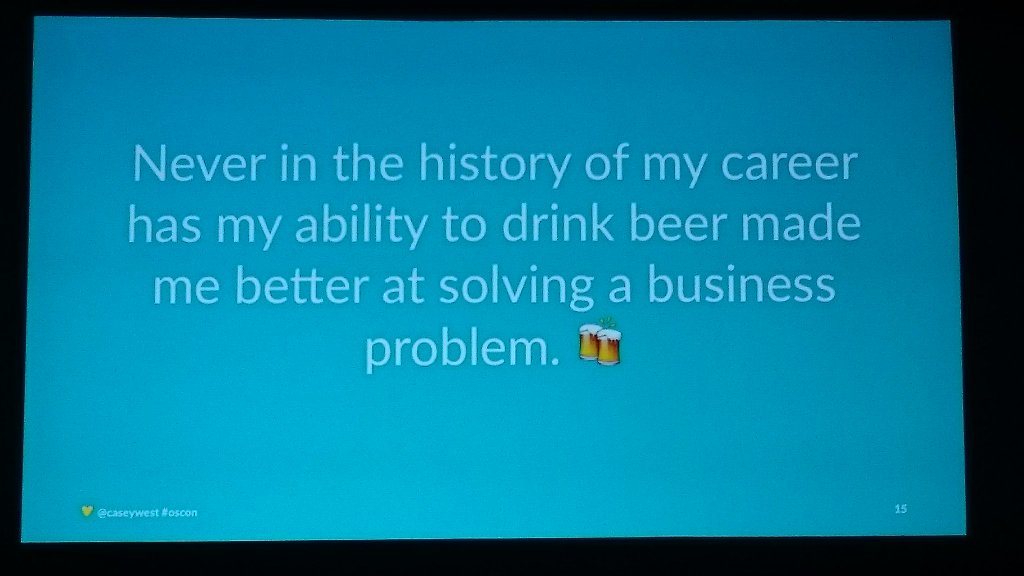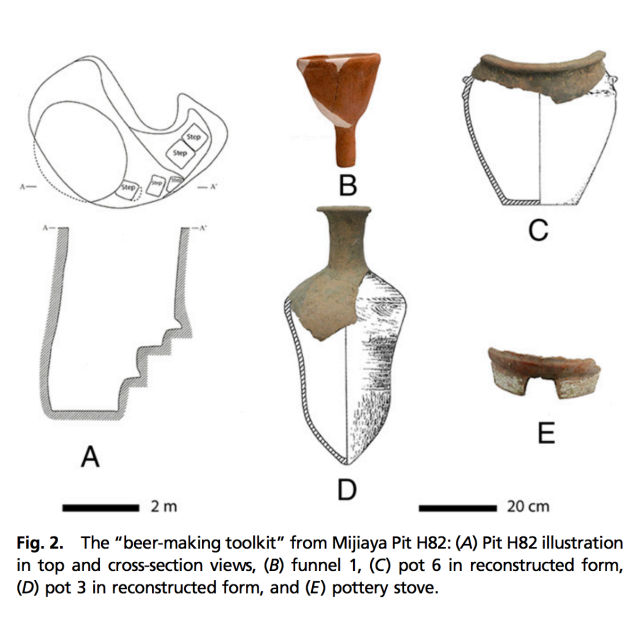A couple different talks at OSCON got me thinking about the unhealthy results of hiring on the basis of “culture fit”.
What is company culture? Is it celebrating with co-workers around the company keg? Or would that exclude non-drinkers? Does your company value honest and direct feedback in meetings? Does that mean introverts and remote workers are talked over? Are long working hours and individual effort rewarded, to the point that people who value family are passed up for promotion?

Often times teams who don’t have a diverse network end up hiring people who have similar hobbies, backgrounds, and education. Companies need to avoid “group think” and focus on increasing diversity, because studies have shown that gender-diverse companies are 15% more likely to financially outperform other companies, and racially-diverse companies are 35% more likely to outperform. Other studies have shown that diversity can lead to more internal conflict, but the end result is a more productive team.
How do you change your company culture to value a diverse team? It’s much more than simply hiring more diverse people or making people sit through an hour of unconscious bias training. At OSCON, Casey West talked about some examples of company culture that create an inclusive environment where diverse teams can thrive:
- Blame-free teams
- Knowledge sharing culture
- Continuous learning
- No judgement on asking questions
- Continuous feedback
- Curiosity about different cultures
- Individually defined work-life balance
- Valuing empathy
For example, if you have a culture where there’s no judgement on asking questions or raising issues and people are naturally curious about different cultures, it’s easy for a team member to suggest a new feature that might make your product appeal to a broader customer base.
The other problem with “culture fit” is that it’s an unevenly applied standard. An example of this was Kevin Stewart’s OSCON talk called “Managing While Black”. When Kevin emulated the company culture of pushing back on unnecessary requirements and protecting his team, he was told to “work on his personal brand”. White coworkers were reading him as “the angry black guy.” When he dialed it back, he was told he was “so articulate”, which is a non-compliment that relies on the stereotype that all African Americans are either uneducated or recent immigrants.
In both cases, even though his project was successful, Kevin had his team (and his own responsibilities) scaled back. After years of watching less successful white coworkers get promoted, he was told by management that they simply didn’t “see him in a leadership role.” Whether or not people of color emulate the white leadership behavior and corporate culture around them, they are punished because their coworkers are biased towards white leaders.
As a woman in technical leadership positions, I’ve faced similar “culture fit” issues. I’ve been told by one manager that I needed to be the “one true technical voice” (meaning as a leader I need to shout over the mansplainy guys on my team). And yet, when I clearly articulate valid technical or resourcing concerns to management, I’m “dismissive” of their goals. When I was a maintainer in the Linux kernel and adamantly pushed back on a patch that wall-papered over technical debt, I was told by another maintainer to “calm down”. (If you don’t think that’s a gendered slur based on the stereotype that women are “too emotional”, try imagining telling Linus Torvalds to calm down when he gets passionate about technical debt.)
The point is, traditional “cultural fit” narratives and leadership behaviors only benefit the white cis males that created these cultural norms. Culture can be manipulated in the span of a couple years to enforce or change the status quo. For example, computer programming used to be dominated by women, before hiring “personality tests” biased for men who displayed “disinterest in people”.
We need to be deliberate about the company culture we cultivate. By hiring for empathy, looking for coworkers who are curious about different cultures, and rewarding leaders who don’t fit our preconceived notions, we create an inclusive work environment where people are free to be their authentic selves. Project Include has more resources and examples for people who are interested in changing their company’s culture.





